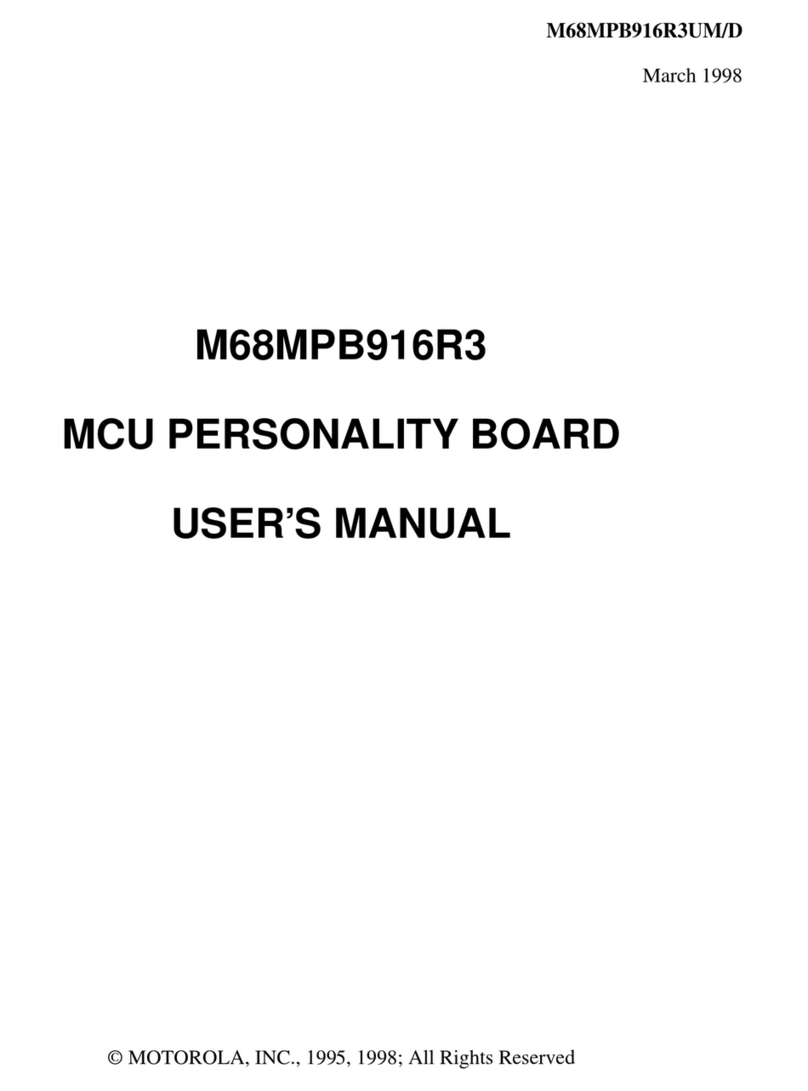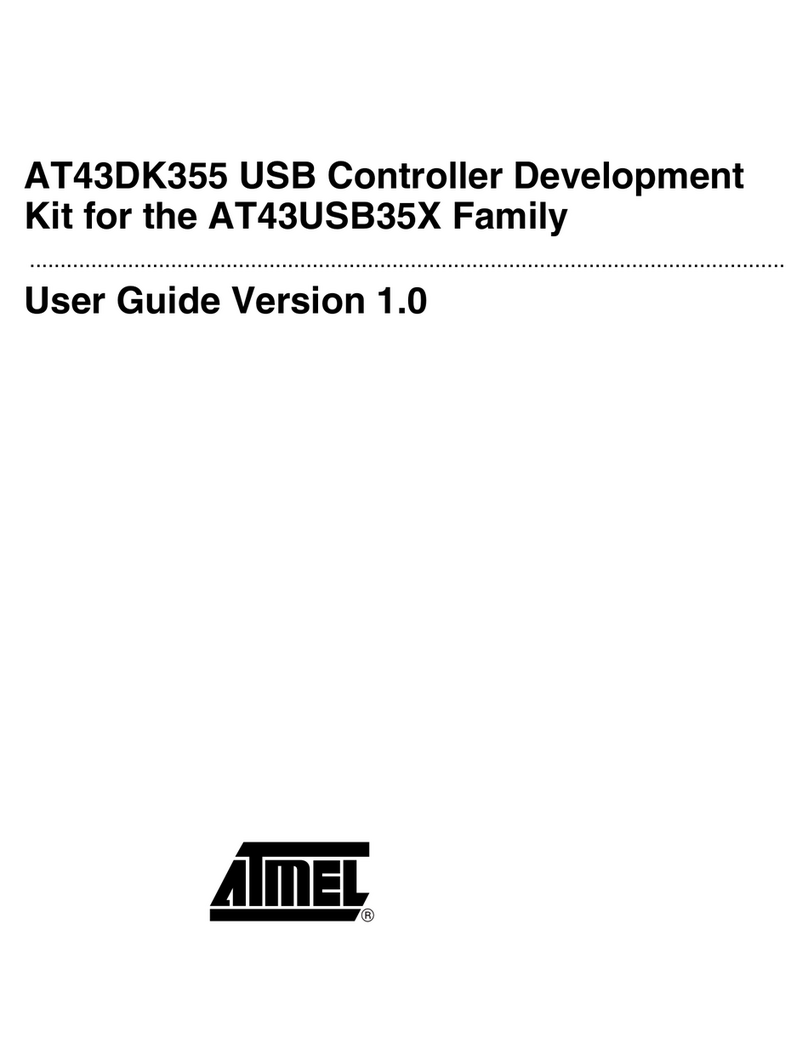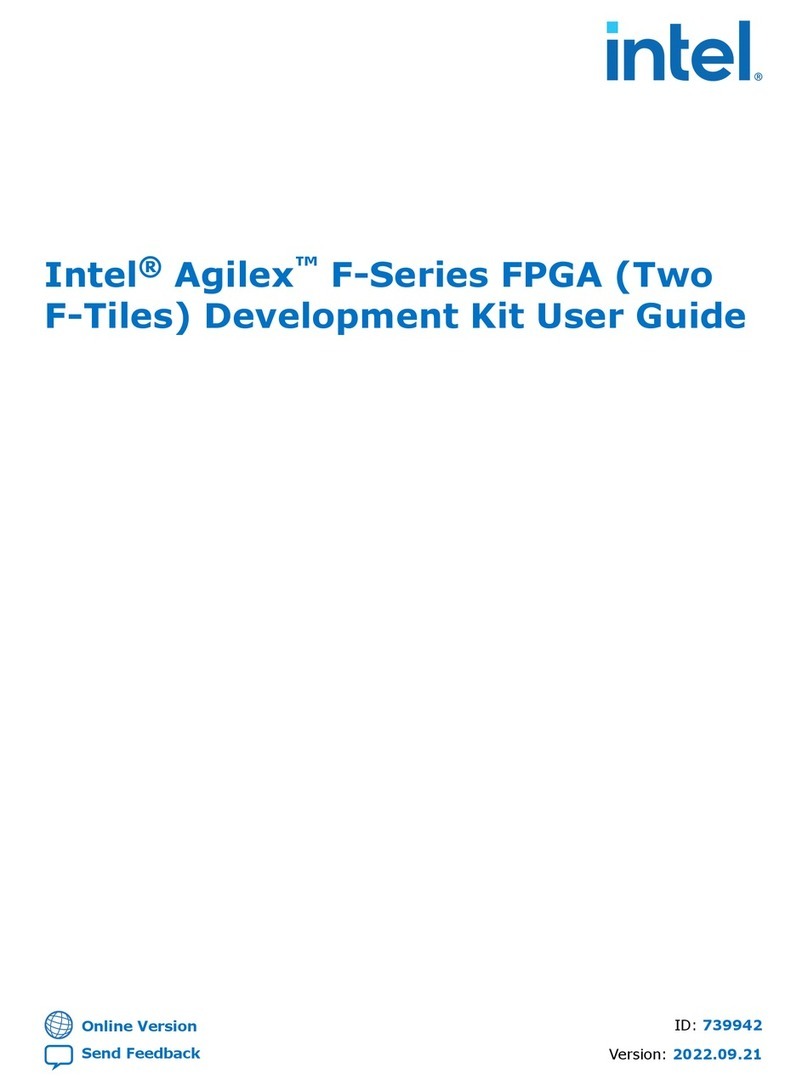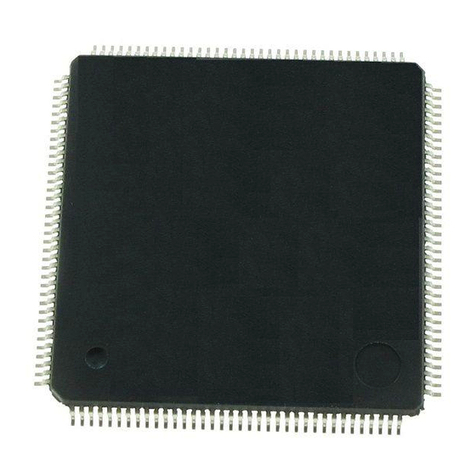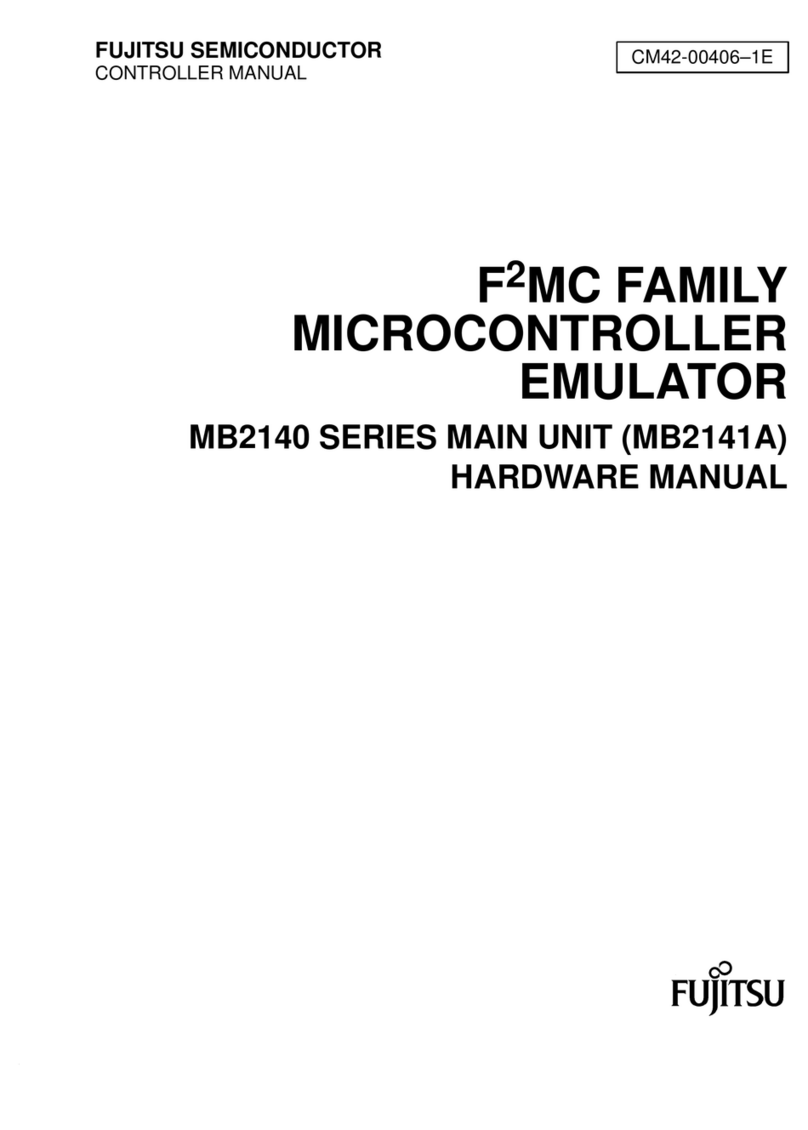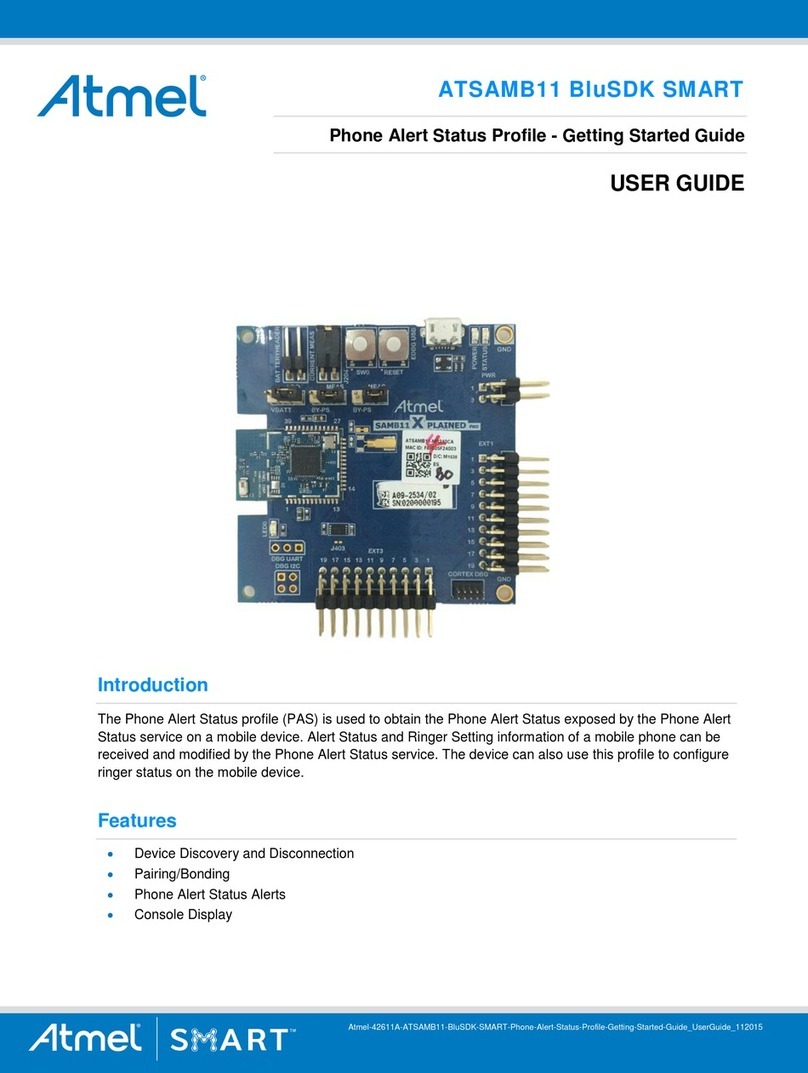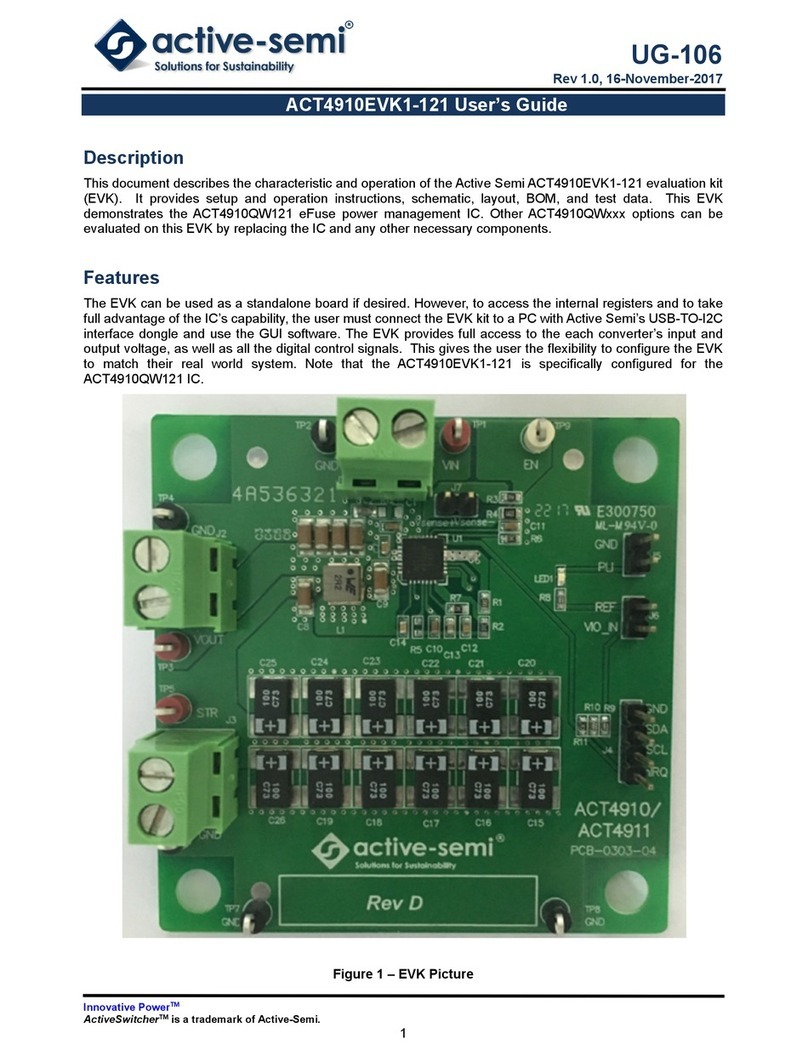Emona Instruments SIGEx ETT-311 User manual

ETT-311 SIGEx
User Manual
Signal Processing Add-on Board for the NI E VISTM


ETT-311 SIGEx
User Manual
Signal Processing Add-on Board for the NI E VISTM

Emona ETT-311 SIGEx™ User Manual
Author: Alfred Breznik and Carlo Manfredini
Issue Number: 1.0
Published by:
Emona Instruments Pty td,
78 Parramatta Road
Camperdown NSW 2050
AUSTRA IA.
web: www.emona-tims.com
telephone: +61-2-9519-3933
fax: +61-2-9550-1378
Copyright © 2011 Emona Instruments Pty td and its related entities. All
rights reserved. No part of this publication may be reproduced or distributed
in any form or by any means, including any network or Web distribution or
broadcast for distance learning, or stored in any database or in any network
retrieval system, without the prior written consent of Emona Instruments Pty
td.
For licensing information, please contact Emona Instruments Pty td.
The SIGEx™ is a trademark of Emona TIMS Pty td.
abVIEW™, National Instruments™, NI™, NI E VIS™, and NI-DAQ™ are
trademarks of National Instruments Corporation. Product and company names
mentioned herein are trademarks or trade names of their respective
companies.
E&OE All specifications are subject to change without notice.
Printed in Australia

Contents
Introduction ............................................................................................. i
SIGEx System Conventions................................................................... iii
How to handle, install and power up SIGEx™ .................................. v
SIGEx™ QUICK START - Installation & Operation ..................... vii
SIGEx™ FUNCTIONA B OCKS
1 – ADDERS and GAIN ADJUST KNOB.......................................................1
2 – ANA OG OUT – NI E VIS Function......................................................3
3 – BASEBAND PF.............................................................................................4
4 – DE AYS with SAMP E & HO D...............................................................5
5 – DIGITA OUT – NI E VIS Function .....................................................6
6 – FUNCTION GENERATOR – NI E VIS Function................................7
7 – INTEGRATE & DUMP/HO D....................................................................8
8 – INTEGRATORS.............................................................................................9
9 – IMITER .........................................................................................................10
10 - MU TIP IER................................................................................................11
11 – PCM ENCODER .............................................................................................12
12 – PCM DECODER.............................................................................................14
13 – RC NETWORK ..............................................................................................16
14 – RECTIFIER ...................................................................................................17
15 – SEQUENCE GENERATOR........................................................................18
16 – TUNEAB E PF ...........................................................................................20
SIGEx™ SOFTWARE INSTA ATION & SFP OPERATION
17 – INSTA ING THE EMONA SIGEx™ SOFTWARE........................21
18 – USING THE SIGEx™ SFP.......................................................................22
19 - CONFIRMING PC-to-SIGEx™ COMMUNICATIONS ...................22
SIGEx™ System Specifications .....................................................................24
EC Declaration of Conformity...................................................... APPENDIX A


© Emona Instruments Pty Ltd Introduction & Conventions i
Introduction
The SIGEx™ Signal Processing Experimenter Add-in Module for NI EL IS™ I/II/II+
SIGEx, or Signal Experimenter, as its name implies, is makes it possible for students to experience
at first and t e interaction between t e t eory and mat ematics of digital signal processing, circuit
analysis and signals & systems t eory, wit t e real world of ardware. T e Emona SIGEx add-in
module is fully integrated wit t e NI ELVIS platform and NI LabVIEW environment.
Equipment Required
Experiments make use of t e Emona SIGEx signal
processing board toget er wit t e NI ELVIS platform
and NI LabVIEW running on a PC. T e functionality and
range of t e virtual instrumentation available depends on
t e NI DAQ t at is coupled wit NI ELVIS platform.
IMPORTANT NOTE CONCERNING DAQ SELECTION
FOR NI ELVIS I
Ideally t e NI-DAQ s ould ave an oscilloscope sample
rate of 1MS/s or more, suc as t e USB-6251 or equivalent, wit 2 c annels. If t e NI-DAQ being
used as only one c annel, t en experiments will not be able to be completed succcessfully.
SIGEx™ bringing BLOCK DIAGRAMS to life
Using t e SIGEx board students bring to life t e block diagrams t at populate signal processing
textbooks. A “block diagram” is a simplified representation of a more complex circuit. An example is
s own in Figure 1 below.
Block diagrams are used to explain t e principle of
operation of electronic systems (like a sampling system,
for example) wit out worrying about ow t e circuit
works. Eac block represents a part of t e circuit t at
performs a separate task and is named according to
w at it does. Examples of common blocks in
communications equipment include t e
adder
,
multiplier,
oscillator
, and
so on.
Didactic philosophy behind the ETT-311 SIGEx™ System
– Emona TIMS™ and the “Block Diagram” approach
T e Emona SIGEx signal processing board draws on a well establis ed experimental met odology t at
brings to life t e “universal language” of signal & systems, t e BLOCK DIAGRAM.
T e Emona SIGEx add-in module, illustrated below, as a collection of functional blocks (called
modules
) t at t e students can patc toget er to implement dozens of signal processing block
diagrams
NI EL IS and SIGEx in use
Figure 1 Example of a
Block Diagram

ii Introduction & Conventions © Emona Instruments Pty Ltd
T e patc ing toget er of blocks into a “model” of t e system being studied is bot practical and
accurate.
One-to-One Relations ip
T e figure on t e rig t illustrates t e one-
to-one relations ip between eac block of
t e BLOCK DIAGRAM and t e independent
functional circuit blocks of t e SIGEx
trainer board.
T e functional blocks of t e SIGEx board
are used and re-used in experiments, just
as blocks of t e block diagram reappear in
many different implementations.
SIGEx™ Integration with NI EL IS™
SIGEx uses t e NI ELVIS for all electronic measurements and test equipment.
T e Emona SIGEx Add-in Module
as a collection of blocks (called
modules) t at are patc ed
toget er to implement many
continuous and discrete time
structures and experiments.
Examples of SIGEx ™ functional blocks
NI ELVIS
inputs and outputs
available at t e
SIGEx front panel
SIGEx ADDER
GAINS - controlled
in MANUAL mode
or via a PC-based
NI LabVIEWTM SFP

© Emona Instruments Pty Ltd Introduction & Conventions iii
SIGEx™ System Conventions
Making lab experiments interesting and informative is important w en introducing new tec nologies
and concepts for t e first time to students.
In order to elp students use t e SIGEx, so t ey spend t eir time learning about t e experiment
rat er t an learning ow to use t e lab equipment, t e front panel of t e SIGEx as been laid out
following a series of front panel conventions.
All SIGEx
modules
conform to t e following mec anical and electrical conventions.
A - FRONT PANEL SOCKETS
Signal interconnections are made via front panel, 2mm sockets.
Sockets on t e LEFT HAND SIDE are for signal INPUTS.
All inputs are ig impedance, eit er 10k o ms or 56k o ms depending on t e module, in order
to reduce effects w en connections are made and broken.
Sockets on t e RIGHT HAND SIDE are for signal OUTPUTS.
All analog outputs are low impedance, typically 330 o ms. Again, t is is to reduce effects w en
connections are made and broken. Digital outputs are typically 47 o ms.
ROUND sockets, “
“, are only for ANALOG signals.
ANALOG signals are typically eld near t e ETT-311 standard reference level of
4V pk-pk.
SQUARE sockets, “
“, are only for DIGITAL signals.
DIGITAL level signals are TTL level, 0 to 5 V.
ROUND sockets labeled GND, “
“, are common, or system GROUND.
Note t at input and output impedances are intentionally mismatc ed, so t at signal connections may
be made or broken wit out c anging signal amplitudes at module outputs.
Input and output sockets are protected from damage due to mis-wiring.
B - LABELING
All modules are identified as to t e function t ey perform.
Inputs, outputs, controls and switc es are labeled so t at a student w o as ad only a brief
introduction to SIGEx can use t e modules wit out needlessly referring back to t is USER MANUAL.

iv Introduction & Conventions © Emona Instruments Pty Ltd
Front panel input and output conventions are illustrated below:
It s ould be noted t at variable ardware controls do NOT ave calibration marks, e.g. t e
TUNEABLE LPF module. T is is intentional, as t e p ilosop y be ind SIGEx is t at students setup
and adjust systems by observing and measuring signals. T is assists t e student in gaining a muc
greater understanding, feel and insig t into t e operation of a communications implementation.
C - PATCHING ERRORS and MAKING EXPERIMENTS
Input and output sockets are protected from damage due to mis-wiring.
An important part of the Emona SIGEx teaching philosophy is that students are free to make
mistakes while patching together experiments. By observing t e result of t eir mistake - w en t e
signals do not look as expected - t ey can experiment and self-correct to obtain t e desired result.
Students are also free to experiment wit different ideas by testing t eir own understanding of ow
t e mat ematics or t eories actually function in real life implementations. T e SIGEx is ideally
suited to elping students experience abstract concepts and making mat ematics actually come to
life.
Studies s ow t at students “believe” unexpected feedback from ands-on equipment more t an from
purely software simulation.
INPUT
sockets on
the LEFT
OUTPUT
sockets on
the RIGHT
DIGITAL input sockets
ANALOG input sockets DIGITAL output sockets
EXAMPLE ETT
-
311
MODULE

© Emona Instruments Pty Ltd Introduction & Conventions v
How to handle, install and power up SIGEx™ with NI EL IS II/+
Handling SIGEx
W en olding SIGEx, always old
t e circuit board by t e edges, as
illustrated.
Ensure NI ELVIS II/+ Prototype Board Power OFF
Before installing t e SIGEx add-in module in t e
NI ELVIS II/+ PROTOTYPE PCI SLOT, always c eck t e
PROTOTYPING BOARD POWER switc is in t e
OFF position.
Installing SIGEx on
NI ELVIS II/+
W en installing t e SIGEx
add-in module in t e NI
ELVIS II/+ PROTOTYPE PCI
SLOT, always carefully
c eck t e alignment is
correct before pus ing
SIGEx into position.
Power up SIGEx
After SIGEx is correctly positioned, turn t e NI
ELVIS II/+ Prototyping Board Power switc ON.
How not to hold SIGEx
Hold SIGEx by the edges
Ensure Prototype Board Power is OFF
Carefully align SIGEx with the
NI EL IS socket
Carefully push SIGEx into position
Check for correct bracket alignment
Turn NI EL IS Prototype Board Power ON

vi Introduction & Conventions © Emona Instruments Pty Ltd
Before removing SIGEx™ from the NI EL IS II/+
Ensure NI ELVIS II/+ Prototype Board Power is OFF
Before removing t e SIGEx add-in module from t e NI
ELVIS II/+ PROTOTYPE PCI SLOT, always turn t e
PROTOTYPING BOARD POWER switc OFF.
ALWAYS STORE THE SIGEx BOARD IN A ESD-SAFE
PLASTIC BAG – AS SUPPLIED WITH ORIGINAL
PACKAGING.
Ensure Prototype Board Power is OFF
before removing SIGEx

© Emona Instruments Pty Ltd Introduction & Conventions vii
SIGEx ™ QUICK START - INSTALLATION AND OPERATION
The following guide outlines the steps required to install and use the NI EL IS platform and the
Emona SIGEx add-in module.
1. Installation of NI components
•Install LabVIEW on your PC – follow NI LabVIEW Installation Guide
•Install NI ELVIS software – follow t e NI ELVIS installation Guide
2. Installation of Emona SIGEx components
•Install Emona SIGEx software using t e SIGEx CD-ROM supplied. Refer to page 21 of t is
User Manual for detailed installation instructions. T e installation will include t e SIGEx SFP,
t e User Manual and Lab Manual PDF files.
3. Setting-up the NI hardware components
•Make all power and interface connections between t e PC, NI DAQ and NI ELVIS
•Power-up NI DAQ and NI ELVIS; Launc t e NI ELVIS LAUNCHER software. T is will most
likely occur automatically w en NI ELVIS is detected.
4. Set-up of the Emona SIGEx add-in module
•Confirm t e NI ELVIS’ “PROTOTYPING BOARD POWER” switc is OFF.
•Holding t e SIGEx board by its outer edges, position it on t e top of t e NI ELVIS platform.
Carefully align t e SIGEx circuit board wit t e NI ELVIS PCI socket and slide into position.
5. Operation
•Power-up t e SIGEX add-in module by switc ing t e NI ELVIS’ “PROTOTYPING BOARD
POWER” switc to ON. Confirm t e t e SIGEx board’s 3 red power LEDs at t e left and side
are lit.
•Patc toget er experiments following t e instructions of t e SIGEx Lab Manual. T e SIGEx
kit includes all equipment required: patc ing wires and oscillscope leads.
•T e NI ELVIS platform powers t e SIGEx add-in module, provides t e test instruments and
interface between NI LabVIEW and t e SIGEx add-in module.
6. SIGEx front panel conventions
•T e SIGEx add-in module follows strict labelling conventions to assist t e student in building
and exploring experiments. For details see page "iii" of t is User Manual. In brief:
Terminals wit a CIRCLE label only take analog signals. (typically + 2V)
Terminals wit a SQUARE label only take digital type signals. ( +5V TTL-level)
INPUT terminals are always on t e LEFT of eac functional block.
OUTPUT terminals are always on t e RIGHT of eac functional block.
7. Power down and unplug SIGEx
•Always switc t e NI ELVIS’ “PROTOTYPING BOARD POWER” switc to OFF before
removing t e SIGEx add-in module.
•Please andle t e SIGEx add-in module by t e outer edges of t e circuit board and store in
t e anti-static bag provided.

viii Introduction & Conventions © Emona Instruments Pty Ltd

Emona SIGEx USER MANUAL © Emona Instruments 1
ADDERS and GAIN ADJUST KNOB
Three independent ADDER blo ks, “a”, “b” and “f, g” are provided. Ea h ADDER sums analog
signals in real-time.
ADDER blo ks “a” and “b” have user adjustable gains. ADDER blo k “f, g” has unity gain only.
USE
The ETT-311 provides three independent ADDER modules, as pi tured above.
ADDER blo ks “a” and “b” have three inputs ea h. Ea h of these three inputs’ gain is user
adjustable manually and on-s reen via the SIGEx SFP. Refer to se tion “Using the SIGEx SFP”
for information on setting input gains.
ADDER blo k “f, g” has fixed input gains of +1.
Care must be taken when adjusting the input gains to avoid overloading the internal ADDER.
Overloading will not ause any damage but it means non-linear operation, whi h is to be avoided
in analog systems. The ombination of input gains and input signal levels should be sele ted to
present a total level of <= 12 V pk to the internal ADDER input.
The ADDER an also be used as a normal amplifier by using only one input and turning the gain
of the other input to zero. It is not ne essary to ground the unused input.
All inputs and outputs are DC oupled.

2 Emona SIGEx USER MANUAL © Emona Instruments
BASIC SPECIFICATIONS
ADDER Blocks “a” and “b”
Inpu s –three inputs: a0, a1, a2, and b0, b1, b2;
Gain Range -2 to 2 for a0, a1, a2, b0, b1 and b2;
Gain Adjus –on-s reen and manual, using GAIN ADJUST; 0.002 maximum resolution;
Bandwid h approx 100kHz
ADDER Block “f,g”
Inpu s –two inputs: f, g;
Gain +1;
Bandwid h approx 60kHz

Emona SIGEx USER MANUAL © Emona Instruments 3
ANALOG OUT – NI ELVIS Func ion
Two NI ELVIS analog outputs are provided at the front panel of the SIGEx add-in module.
USE
NI ELVIS analog outputs DAC0 and DAC1 are provided from the NI ELVIS PCI onne tor.
These signals are provided dire tly from the NI ELVIS unit.
These two signals are generated through LabVIEW programs su h as the SIGEx SFP.
Refer to the NI ELVIS User Manual for programming and user information.
BASIC SPECIFICATIONS
DAC0 Fun tion Output signal DAC0; +/- 10V
DAC1 Fun tion Output signal DAC1; +/- 10V

4 Emona SIGEx USER MANUAL © Emona Instruments
BASEBAND LPF
An a tive, 4th order, 1,8kHz lowpass filter.
USE
The lowpass filter may be used to filter analog signals greater than 1.8kHz
BASIC SPECIFICATIONS
Bandwid h DC to approx 1.8kHz
Gain 0.9
Type 4th order Butterworth

Emona SIGEx USER MANUAL © Emona Instruments 5
DELAYS wi h SAMPLE & HOLD
One sampler and three delay blo ks are provided for sampling and delaying analog signals. Ea h
of these four blo ks is lo ked with the same digital level lo k signal.
USE
SAMPLE and HOLD
The SAMPLE and HOLD takes a varying analog signal at its input, samples the in oming signal at
the instant of the positive edge of the CLK signal, and holds that sampled analog voltage at its
output.
The output signal is updated on ea h positive edge of the input CLK signal.
An appropriate digital-level CLK signal must be provided for the SAMPLE and HOLD blo k to
fun tion.
DELAY BLOCKS
Three independent analog signal DELAY blo ks are provided. Ea h DELAY blo k is lo ked by a
ommon CLK signal.
On the o urren e of the positive edge of the CLK signal, the analog voltage at the input of
ea h DELAY blo k is transferred and held at ea h respe tive output terminal.
An appropriate digital-level CLK signal must be provided for the DELAY blo ks to fun tion.
BASIC SPECIFICATIONS
SAMPLE and HOLD
Inpu level 4Vpk-pk, analog level signal;
CLK inpu 100Hz to 50kHz, digital-level only, 0V to 5V;
DELAY BLOCKS
Number of blocks three independent DELAY blo ks;
Inpu level 4Vpk-pk, analog level signal;
CONTROL CLK ommon with SAMPLE and HOLD CLK
Gain 1.0 +/-5%

6 Emona SIGEx USER MANUAL © Emona Instruments
PULSE / CLOCK GENERATOR; DIGITAL OUT
– NI ELVIS Func ion
Two NI ELVIS digital outputs are provided at the front panel of the SIGEx add-in module.
USE
NI ELVIS digital outputs DO0 and DO1 are provided from the NI ELVIS PCI onne tor.
These signals are provided dire tly from the NI ELVIS unit.
DO1 is used by the SIGEx SFP to provide PULSE GENERATOR and digital CLOCK output
signals, as required by the sele ted experiment. The SFP ontains the frequen y and duty
y le ontrols.
DO0 is provided as an additional user programmable digital output, for future expansion
purposes. The SFP has a toggle option implemented for demonstration purposes.
Refer to the NI ELVIS User Manual for programming and user information.
BASIC SPECIFICATIONS
DO-0 Digital Writer outputs from NI ELVIS onne tion DO0 and DO1;
DO-1 Variable frequen y : 10-100,000 Hz
Duty y le: 1-99%
Table of contents
Popular Microcontroller manuals by other brands
NXP Semiconductors
NXP Semiconductors MCUXpresso SDK user guide

Winbond
Winbond ISD1700 Series manual
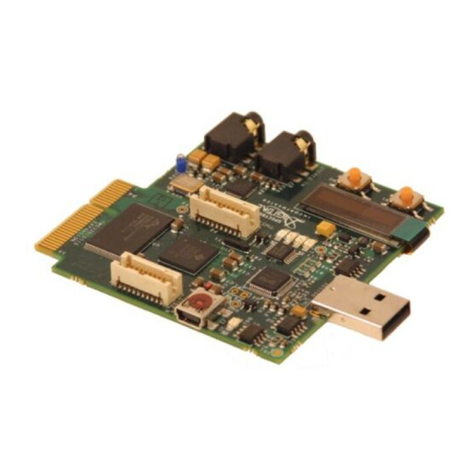
Spectrum Digital
Spectrum Digital TMS320C5515 eZdsp Technical reference
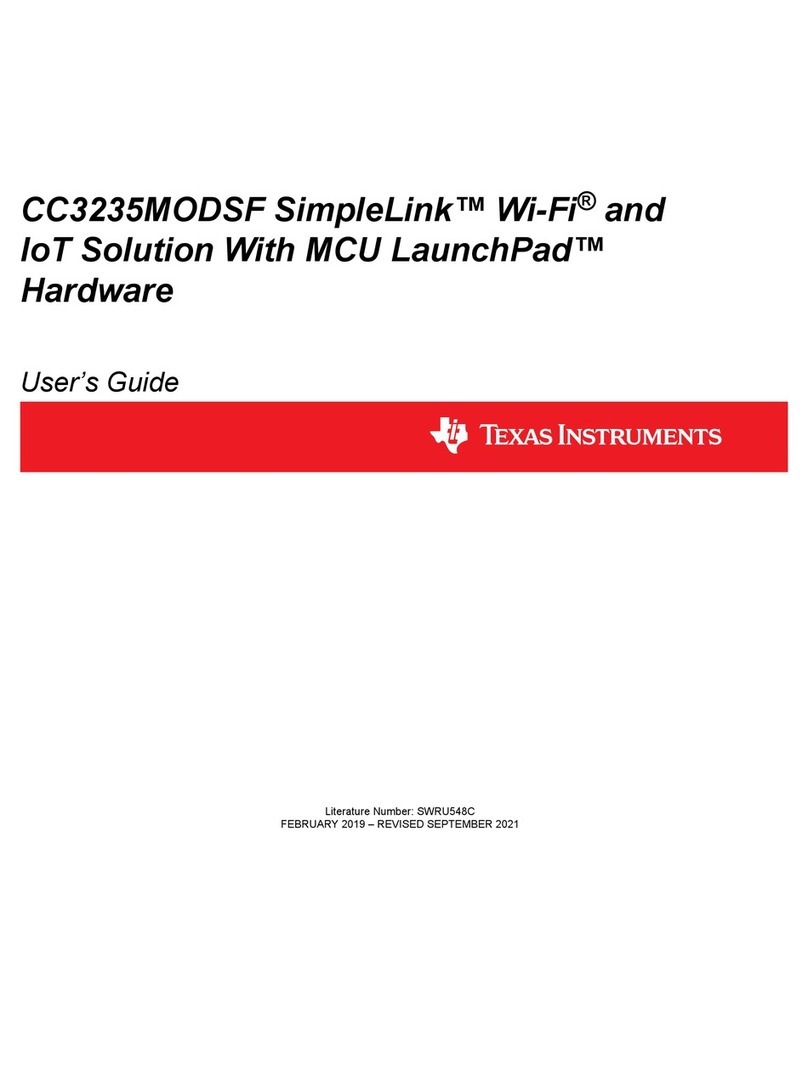
Texas Instruments
Texas Instruments CC3235MODASF user guide

Infineon
Infineon iMOTION2go user manual
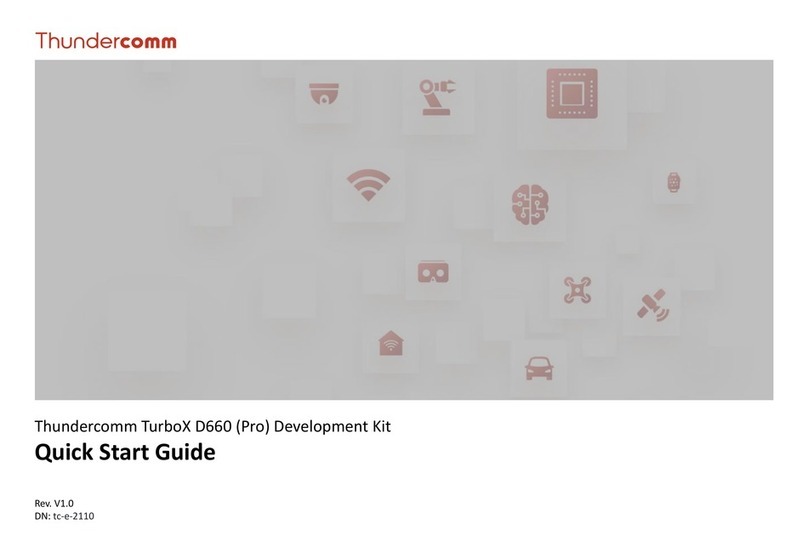
Thundercomm
Thundercomm TurboX D660 quick start guide

